You don't always need to explicitly form a matrix to do a matrix-vector or matrix-matrix multiplication. For example, no one really forms a diagonal matrix and use it for such computations.
There is no substantial difference between your matrix and a diagonal matrix.

So you reduce the operation to a series of vector addition. Here is a trivial R-level implementation.
MatVecMul <- function (y, k) {
n <- length(y)
z <- numeric(n)
for (i in 1:n) z[i:n] <- z[i:n] + k ^ (i - 1) * y[1:(n - i + 1)]
z
}
A comparison with direct matrix construction and computation.
d <- structure(c(1, 0.9, 0.81, 0.729, 0.6561, 0, 1, 0.9, 0.81, 0.729,
0, 0, 1, 0.9, 0.81, 0, 0, 0, 1, 0.9, 0, 0, 0, 0, 1), .Dim = c(5L, 5L))
set.seed(0); y <- runif(5)
c(d %*% y)
#[1] 0.8966972 1.0725361 1.3374064 1.7765191 2.5070750
MatVecMul(y, 0.9)
#[1] 0.8966972 1.0725361 1.3374064 1.7765191 2.5070750
Can replace the R-level "for" loop easily with Rcpp.
library(Rcpp)
cppFunction("NumericVector MatVecMul_cpp (NumericVector y, double k) {
int n = y.size();
NumericVector z(n);
int i; double *p1, *p2, *end = &z[n];
double tmp = 1.0;
for (i = 0; i < n; i++) {
for (p1 = &z[i], p2 = &y[0]; p1 < end; p1++, p2++) *p1 += tmp * (*p2);
tmp *= k;
}
return z;
}")
MatVecMul_cpp(y, 0.9)
#[1] 0.8966972 1.0725361 1.3374064 1.7765191 2.5070750
Let's have a benchmark.
v <- runif(1e4)
system.time(MatVecMul(y, 0.9))
# user system elapsed
# 3.196 0.000 3.198
system.time(MatVecMul_cpp(y, 0.9))
# user system elapsed
# 0.840 0.000 0.841
One caution though: be aware of machine precision. As soon as k ^ (i - 1) becomes too small, you may lose all significant digits during addition. See R: approximating `e = exp(1)` using `(1 + 1 / n) ^ n` gives absurd result when `n` is large. In this example with k = 0.9, there is k ^ 400 = 5e-19. So even though the full matrix is 10000 x 10000, it is numerically banded than lower triangular. This means that we can actually terminate the loop earlier. But I will not implement this.
